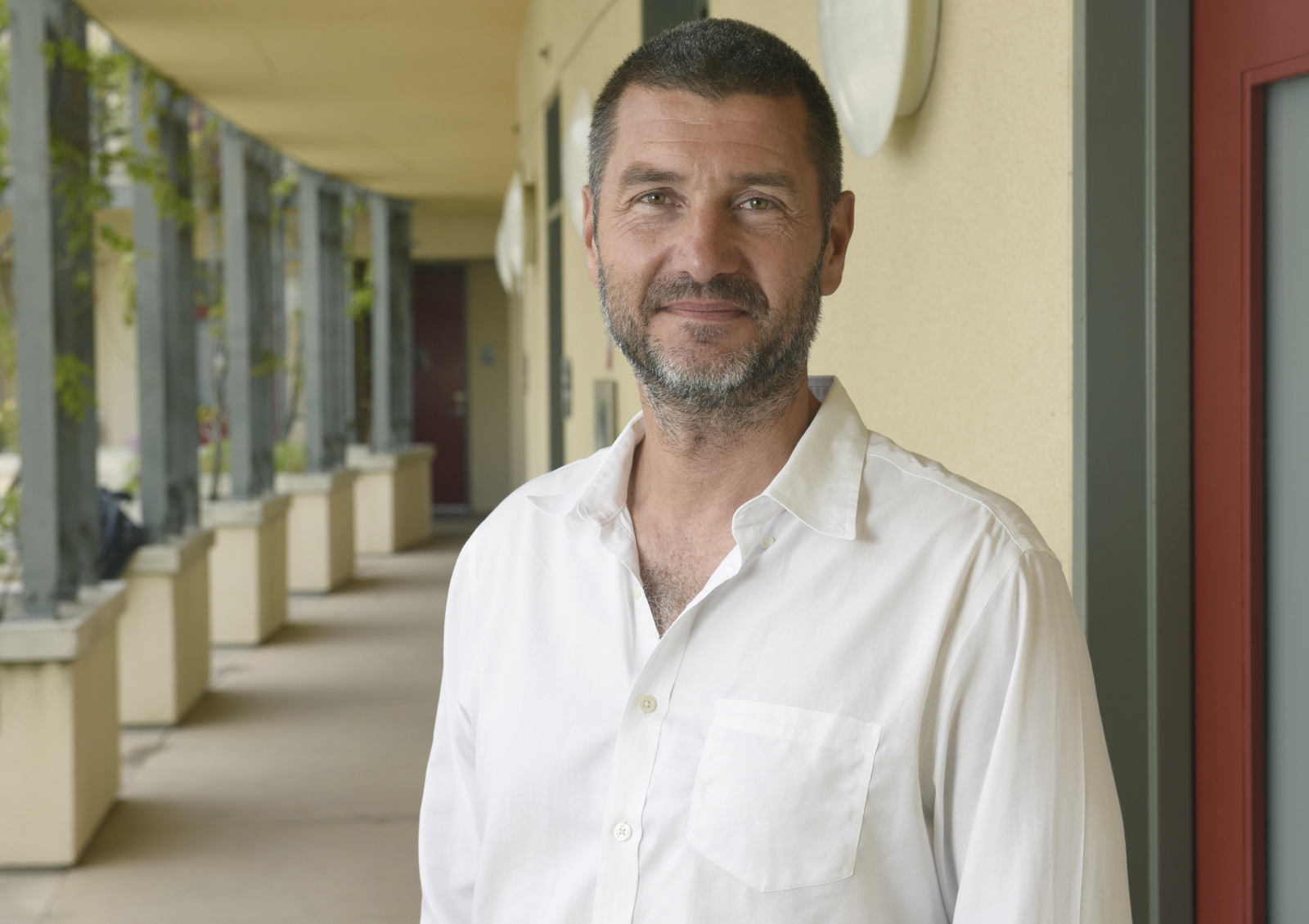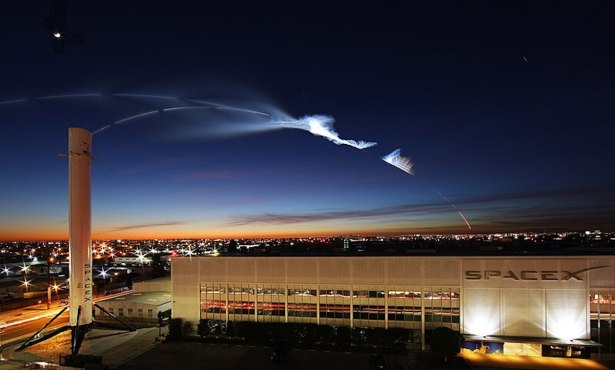Roland Geyer Looks to Rewrite the Book on Plastics
UCSB Researcher Says Recycling and Bans Are Not Enough

As Dr. Roland Geyer, the researcher who helped determine the amount of all plastics ever made, sat in his office — complete with green carpeting and orange Eames-style chairs — a MarBorg garbage truck slowly rumbled down the road behind him, visible through his third-story window in UC Santa Barbara’s Bren School building. The moment was particularly apropos, given that it was a garbage truck much like this one that set a young Geyer down the career path he is on today. In his childhood home in a small town in Bavaria, Germany, Geyer used to watch the neighborhood garbageman on his weekly rotation and wonder, “Where does it all go?”
Geyer lived out his childhood and early adulthood in 1980’s Germany as the son of parents who came of age during World War II. As is true of many European Gen Xers, Geyer grew up around the mantra of “Waste not, want not.” The resourceful attitude of the time came as a result of war rations and economic anxiety, which hit Germany particularly hard. “It’s funny enough when you think of pollution-prevention principles or circular economies … a lot of it is the way grandma did things,” Geyer said of contemporary sustainable systems.
The hot new terms for these systems and practices — like “circular economy,” an economic system aimed at minimizing waste and making the most of resources — are really just reinventions of the wheel, Geyer said. The premise has been around for decades, if not centuries.
But today, the norm has become “More is better” in most countries. In Germany, there is even a specific word for it: Wegwerfgesellschaft, or “throwaway society,” which Geyer noted as a classic example of one of German’s prolifically long words to describe specific things. Even with Germany’s sense of awareness of the detriments of wastefulness, Geyer said the country is struggling with single-use plastic consumption just as much as countries like the United States.
Additionally, in their attempts to combat plastic waste generation, these countries are getting it wrong, Geyer said. “Everyone just wants to fix the recycling system — come up with new technologies to turn it into fuels, or road material, or whatever,” he said. “And I think what we really need to do is just all agree that we’re making too much plastic and we need to make less. It’s pretty simple.” The same is true of combatting climate change. For Geyer, the issue is “just about leaving the fossil fuels in the ground.” But in the U.S., as well as in many other places, adopting the habit of not doing something is nearly impossible.
Numbers Can Change Behavior
Back in the 1980’s, when Geyer was on the hunt for a university program that suited his interests, he couldn’t find a single environmental studies program in Germany. So, instead, he pursued physics and later got a PhD in engineering. This more technological background is what Geyer says contributed to his eventual pursuit of using numbers to convey the story of plastic.
In 2015, through sponsorship from the Ocean Conservancy, and after four years of collaboration with a specially formed working group, Geyer and his team published their work in Science magazine. Their model showed somewhere between 4.8 and 12.7 million metric tons of plastic waste had entered our oceans in the year 2010 alone. Two years later, with that same data and model, Geyer and his colleagues were able to determine that humans had produced approximately 8.3 billion metric tons of plastic since 1950.
As abstract as numbers can be, they can also serve as a catalyst for action. At least that’s what Geyer hopes. Regarding policy and legislation, Geyer said he feels the same about the bans on plastic straws and bags. He believes the bans could be a good thing, as long as they make people think about which plastic product they can eliminate from their lives next. But he worries that there is the potential for such bans to make people think their work is done. Straws aren’t even the most likely thing to end up in the ocean, Geyer says, which makes the ban more symbolic. The worst-case scenario would be for “plastic fatigue” to set in, with people essentially throwing in the proverbial polyester towel on the fight against plastics.

Even in Geyer’s own household, his family struggles with adopting eco-friendly habits. Though they have composting down, everyone remains as confused as everyone else in Santa Barbara about what can go in the blue bin. Instead of recycling, Geyer recommends that people purchase items with little to no single-use components. For example, Geyer replaced the Nespresso machine in his office, which uses aluminum capsules for each drink, with a consumer-friendly and affordable espresso machine, which eats up nothing but coffee beans and water.
Besides changing his coffee habit, Geyer also makes sure to buy his produce loose, avoid individual packaging whenever possible, and choose more durable products that have longer lifetimes. But Geyer believes that the most effective battle tactic against creating more plastic waste is “source reduction.” Paraphrasing one of his previous PhD students, Dr. Trevor Zink, Geyer said, “The only material that doesn’t need disposal is the one we never made.”
From Technology to the Humanities
While discussing Geyer’s work, one of his research students checked in to see if they’re still on for a 2 p.m. meeting. Geyer visibly cringed at the reminder before nodding yes. The meeting in question concerns the book Geyer is in the midst of writing, which he hopes to finish before 2020. “Writing it has been a failure so far,” Geyer said. But regardless of whether the book-writing process is going smoothly or not, it is clearly what Geyer wants to be doing.
“I feel like I almost have an obligation to think hard about what the most meaningful thing I can do at this point is,” Geyer said, considering his academic tenure and more than 15 years of research in his field under his belt. The book seems to symbolize an important junction in Geyer’s career, one that veers away from the more technological view of environmental issues, and toward a more interdisciplinary perspective that merges the humanities with environmental research. “After 15 years of doing this for a living, I’m finally brave enough to really go out and say: It’s a behavioral and social problem we need to solve, not a technological one.”




You must be logged in to post a comment.